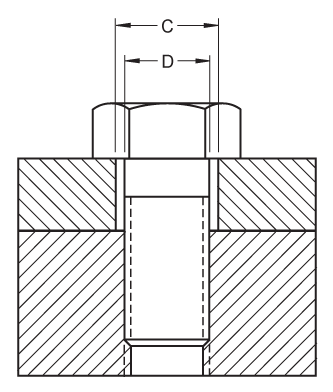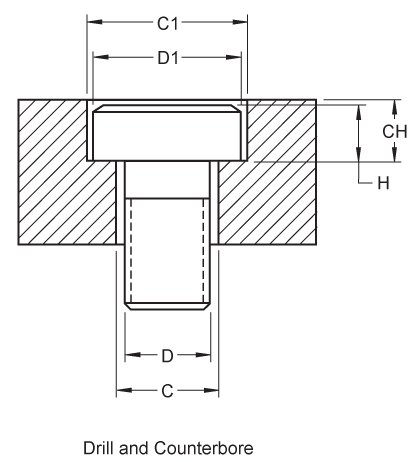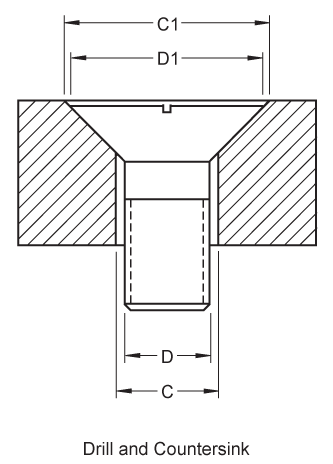Bolt and Screw Clearances
Clearance Holes
Bolts and screws attach one material with a clearance hole to another material with a threaded hole. The size of the clearance hole depends on;
- the major diameter of the fastener
- the type of fit (normal, close, loose)
These clearance hole diameters may be found in the appendix of the Engineering Graphics Essentials book.

Sometimes bolt or screw heads need to be flush with the surface. This can be achieved by using either a counterbore or countersink depending on the fasteners head shape.
Counterbores: Counterbores are holes designed to recess bolt or screw heads below the surface of a part. Typically, CH = H + 1/16 (1.5 mm) and C1 = D1 + 1/8 (3 mm).

Countersink: Countersinks are angled holes that are designed to recess screws with angled heads. Typically, C1 = D1 + 1/8 (3 mm).

